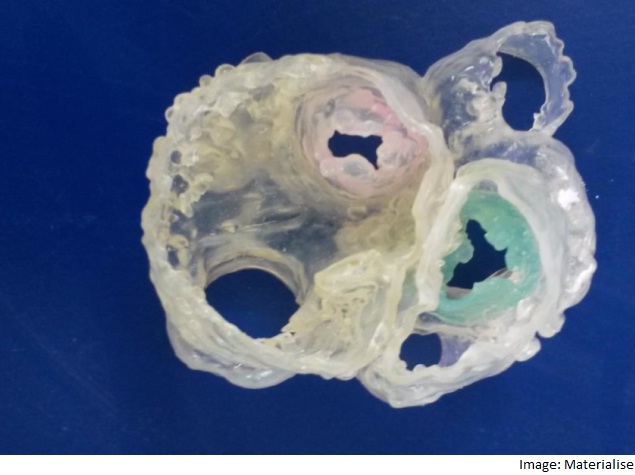- Home
- Laptops
- Laptops News
- First Heart 3D Printed With Multiple Imaging Techniques
First Heart 3D-Printed With Multiple Imaging Techniques

This is the first time the integration of computed tomography (CT) and 3D transesophageal echocardiography (3DTEE) has successfully been used for printing a hybrid 3D model of heart.
The study also opens the way for these techniques to be used in combination with a third tool magnetic resonance imaging (MRI).
"This is a huge leap for individualised medicine in cardiology and congenital heart disease. The technology could be beneficial to cardiologists and surgeons," said Dr. Joseph Vettukattil from Helen DeVos Children's Hospital in Michigan.
The model will promote better diagnostic capability and improved interventional and surgical planning, which will help determine whether a condition can be treated via transcatheter route or if it requires surgery."
"Hybrid 3D printing integrates the best aspects of two or more imaging modalities," said Jordan Gosnell, cardiac sonographer and lead author of the study.
The team used specialised software to register images to selectively integrate datasets to produce an accurate anatomic model of the heart.
The result creates more detailed and anatomically accurate 3D renderings and printed models, which may enable physicians to better diagnose and treat heart disease.
Vettukattil is known internationally for his work and research with three-and four-dimensional echocardiography.
He presented the results at the CSI 2015 congress in Frankfurt, Germany recently.
Get your daily dose of tech news, reviews, and insights, in under 80 characters on Gadgets 360 Turbo. Connect with fellow tech lovers on our Forum. Follow us on X, Facebook, WhatsApp, Threads and Google News for instant updates. Catch all the action on our YouTube channel.
Related Stories
- Samsung Galaxy Unpacked 2025
- ChatGPT
- Redmi Note 14 Pro+
- iPhone 16
- Apple Vision Pro
- Oneplus 12
- OnePlus Nord CE 3 Lite 5G
- iPhone 13
- Xiaomi 14 Pro
- Oppo Find N3
- Tecno Spark Go (2023)
- Realme V30
- Best Phones Under 25000
- Samsung Galaxy S24 Series
- Cryptocurrency
- iQoo 12
- Samsung Galaxy S24 Ultra
- Giottus
- Samsung Galaxy Z Flip 5
- Apple 'Scary Fast'
- Housefull 5
- GoPro Hero 12 Black Review
- Invincible Season 2
- JioGlass
- HD Ready TV
- Laptop Under 50000
- Smartwatch Under 10000
- Latest Mobile Phones
- Compare Phones
- Jolla Phone
- Realme P4x 5G
- OnePlus Ace 6T
- Nubia Flip 3
- Nubia Fold
- OPPO A6x 5G
- Samsung Galaxy Z TriFold
- Poco F8 Ultra
- Asus ProArt P16
- MacBook Pro 14-inch (M5, 2025)
- OnePlus Pad Go 2
- Poco Pad M1
- Just Corseca Skywatch Pro
- Honor Watch X5
- Acerpure Nitro Z Series 100-inch QLED TV
- Samsung 43 Inch LED Ultra HD (4K) Smart TV (UA43UE81AFULXL)
- Asus ROG Ally
- Nintendo Switch Lite
- Haier 1.6 Ton 5 Star Inverter Split AC (HSU19G-MZAID5BN-INV)
- Haier 1.6 Ton 5 Star Inverter Split AC (HSU19G-MZAIM5BN-INV)

















